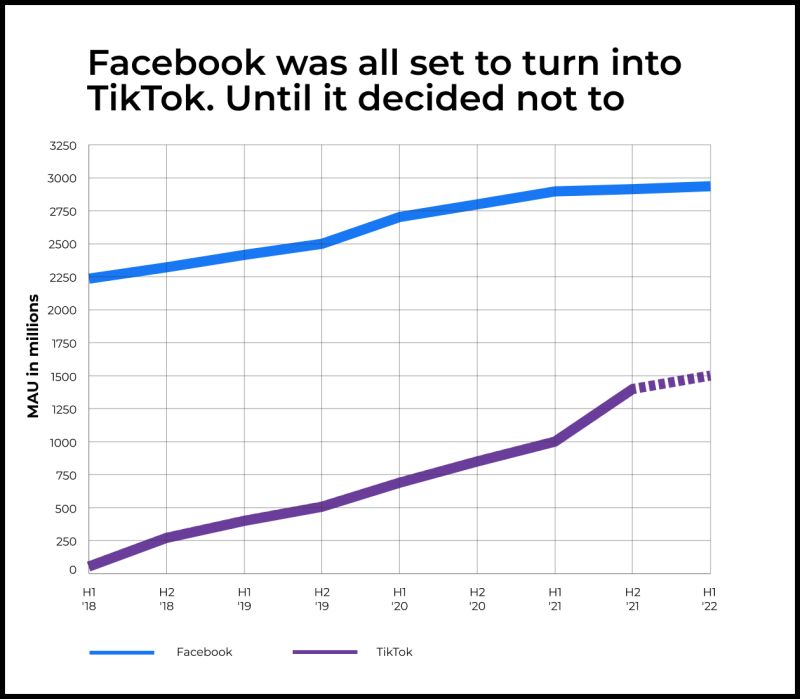Facebook was all set to turn into TikTok. Until it decided not to.
Years later, Facebook changed its mind. But it was too late and they missed the opportunity. What went wrong?
→ Test your product management and data skills with this free Growth Skills Assessment Test.
→ Learn data-driven product management in Simulator by GoPractice.
→ Learn growth and realize the maximum potential of your product in Product Growth Simulator.
→ Learn to apply generative AI to create products and automate processes in Generative AI for Product Managers – Mini Simulator.
→ Learn AI/ML through practice by completing four projects around the most common AI problems in AI/ML Simulator for Product Managers.
Facebook’s news feed was designed to learn from users’ preferences and show content that “sparks conversations” in order to maximize time spent and engagement.
Initially, the feed was populated with posts from friends. But over time, public content — mostly short-form videos from publishers and creators — started winning out.
For many people, a feed that surfaced the best Facebook content without necessarily being limited to friends was more engaging.
You might remember a point several years back when your Facebook feed turned into a series of short viral videos. And it was really hard to stop watching them!
But in 2018 Facebook made a big change. They decided to pivot to friends and conversations, at the expense of viral videos and the like.
The biggest losers were the creators and publishers who had invested in short-format videos. Facebook executives justified the move by calling video a “passive experience”.
At the time I thought this was smart. In hindsight, it seems like a really bad decision (it’s always easy to be smart after the fact!).
After all, chat had already been parceled out to separate apps (WhatsApp, Messenger). This was a great chance to repurpose the core blue app to surface the most engaging content available.
As of early 2018, TikTok’s MAU was just 55 million users. The MAU of Facebook users whose news feed had organically turned into “TikTok-lite” was much, much larger.
However, the Facebook team did not embrace what users enjoyed. They refocused the feed on friend-generated content. Something that had been core to their success to date.
In the short term, this decision caused a significant drop in time spent and revenue. More importantly, they ceded a new market that TikTok has happily conquered.
A few years later, TikTok would reach 1 billion active users.
TikTok’s growth largely piggybacked off of Facebook. TikTok became one of the biggest advertisers on Facebook. Not surprisingly, their ads with engaging content worked well.
Once the Facebook team realized that they were losing users and time spent to TikTok, they decided to catch up.
This time they leaned hard into turning Instagram and then other products into TikTok. However, this flopped and they had to walk back some of the changes.
The trick that worked previously with Stories and Snapchat didn’t work its magic this time.
The social graph is not important to TikTok’s algorithmic feed. Rather the opposite, in fact, TikTok ignores the social graph entirely to provide the highest-quality content.
And the quality of content, of course, depends on the creators. The same creators that Facebook pushed away back in 2018.










